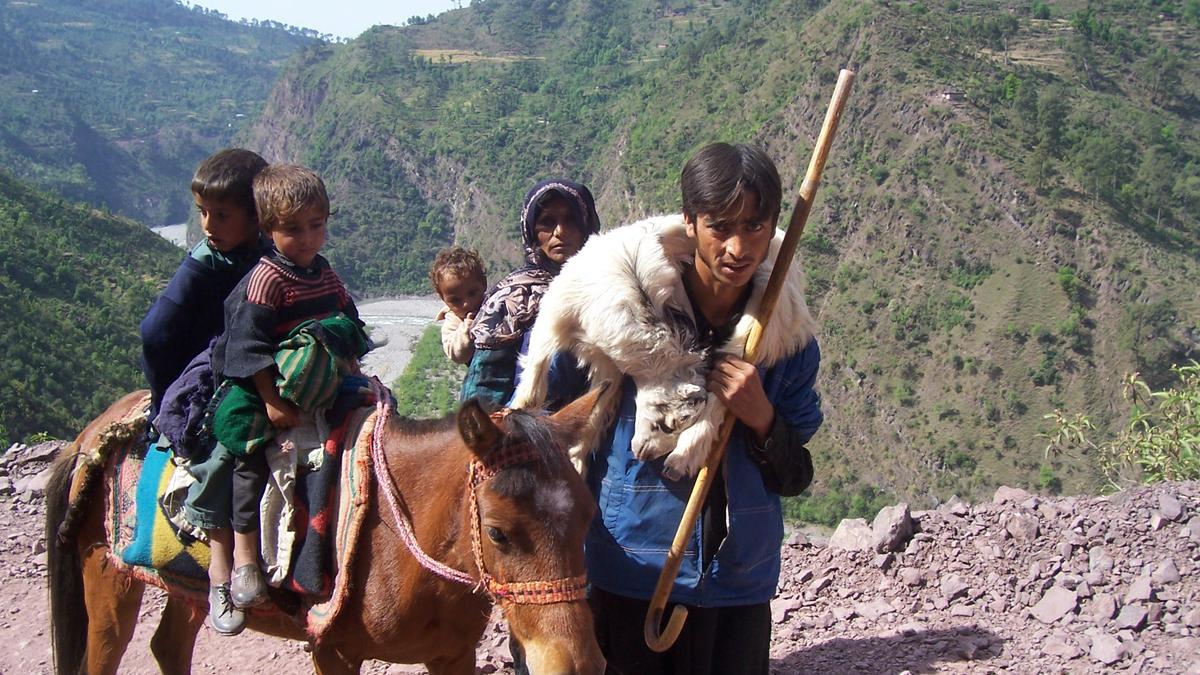Identity has been a central part of Ladakh’s journey, from being part of Jammu & Kashmir, to attaining Union Territory status in 2019, and now to witnessing widespread demands for Statehood.
Ladakh shows a stark duality in its religious and linguistic makeup. As of 2025, it comprises seven districts, though before the Jammu & Kashmir Reorganisation Act it consisted of just two — Leh and Kargil.

Throughout the Union Territory’s history, the two districts have often tussled over recognition, particularly on questions of identity. Census 2011 data show that while over 65% of Leh’s population is Buddhist, more than 75% of Kargil’s population is Muslim.
Data also show that 71% of people in the Leh district and more than 86% of Kargil’s population belong to Scheduled Tribes, according to the 2011 census. In Leh, the Boto tribe, accounting for about 77.5% of the tribal population, primarily follows Buddhism. In Kargil, the Purigpa tribe make up nearly 32% of the tribal population, while the Baltis make up 30%. Majority of members from both tribes practice Islam.
A population divide is also reflected in language. In Leh, nearly 70% of the population speaks Bhotia, compared with just over 10% in Kargil. In contrast, Kargil has a majority of Tibetan speakers, accounting for 66% of its population, according to the 2011 census.
How wealthy are Ladakhis compared with the rest of the country? The National Family Health Survey divides India’s population into five equal quintiles — poorest, lower middle, middle, upper middle, and richest — with 20% of the population in each, serving as a benchmark. Ladakh’s population is then slotted into these national quintiles.
Based on this method, only 6% of Ladakhis fall into the richest bracket and 13.3% into the poorest. The largest share — 30% — lies in the second quintile, followed by 27% in the middle and 23% in the fourth. This suggests that Ladakhis are neither extremely poor nor extremely rich, with most concentrated in the middle and lower-middle groups.
Much of Ladakh’s terrain lies at high altitudes, nestled in the Himalayas, with most of its population living in its deep valleys. It is classified as a cold desert landscape, which is an arid area that receives low amounts of precipitation, majorly in the form of snow.
Tree cover accounts for only 2% of Ladakh’s geographical area — the lowest among all States and Union Territories in India. For comparison, tree cover makes up about 25% of India’s terrain. A little less than half of its land area is “degraded”, or has experienced a decline in biological productivity via factors such as soil erosion, deforestation, overgrazing, and more.
Only 5% of women in Ladakh are covered by health insurance, while 18% of men in the UT are insured. This pales in comparison to the all-India average, wherein around 30% of men and women are covered by health insurance.
Diabetes is three times more prevalent in Ladakh’s women than it is among all Indian women. It is also two times more prevalent in Ladakhi men than among Indian men. The table shows the prevalence (in %) of select diseases in Ladakh and across India.
When it comes to education, and specifically primary education, Ladakh is significantly behind the national average, with nearly one-third of eligible children not enrolled in elementary school. In comparison, only 4% of children across India have not been enrolled in elementary school.
Further, only about one in nine young adults in Ladakh pursue higher education after secondary school, compared to more than one in four across India. The table shows Ladakh and India in terms of education-related indicators.
More than 30% of women in Ladakh have had no schooling. Of those that are employed, seven out of ten women in Ladakh are engaged in agriculture and allied activities. In comparison, only two in ten Ladakhi men are engaged in these activities. Sizable shares of men in Ladakh are employed in the public administration and defense sector (12.4%) while others work in agriculture, construction, and the trade and repair of motorcycles.
Source: National Family Health Survey, 2011 Census, NITI Ayog SDG indicators
Published – September 30, 2025 08:00 am IST
